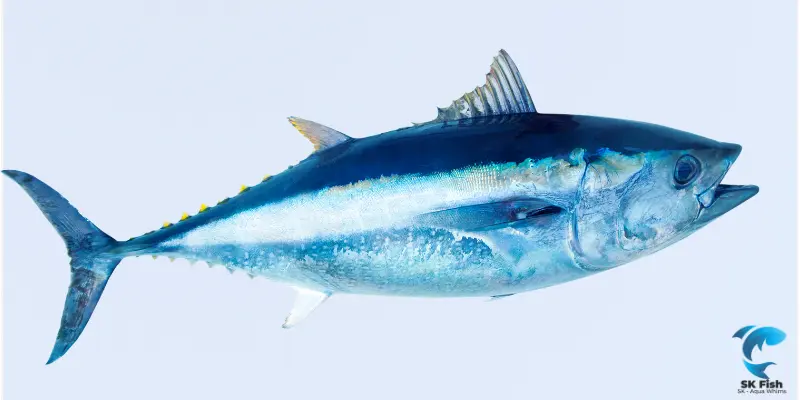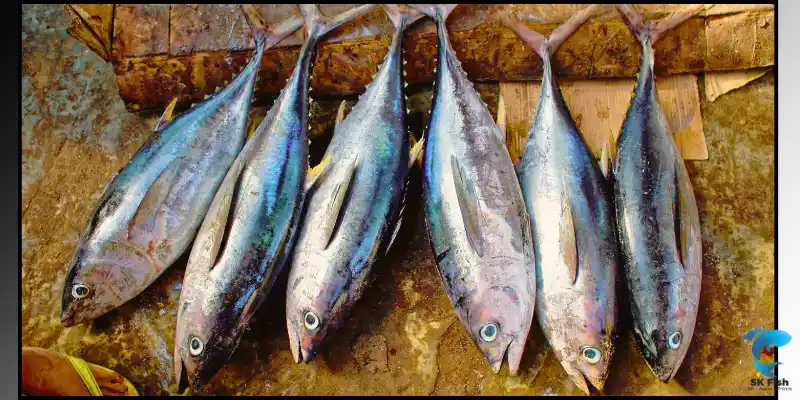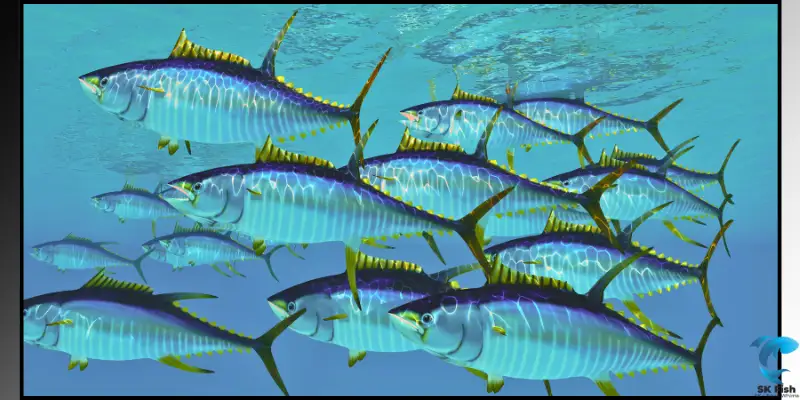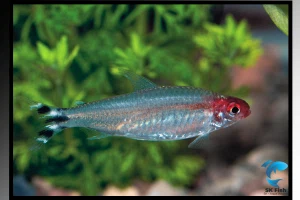Frigate Tuna | Fun Facts, Habitat, Distribution & Fishing
Published: 21 Mar 2024
Frigate tuna are renowned for their speed and agility, making them a dominant species in the ocean. In this blog, we explore fascinating facts about these remarkable fish. Frigate tuna, known for their sleek and unique body structure, are a prominent species in saltwater environments.
How do you catch frigate tuna? Look no further! Here you can find all the essential details about this amazing species. Let’s start to explore more about this fish.
What is Frigate Tuna?
The scientific name of frigate tuna is ‘Auxis thazard,’ belonging to the Scombridae family. They are also known as frigate mackerel, alagaduwa, and melva in Spanish. These species are renowned for their migrating behavior. Let’s delve deeper into the world of frigate mackerel.

Common Names
Frigate mackerels are known by various names depending on their region. Some common names are listed below:
- Frigate Tuna
- Frigate Mackerel
- Alagaduwa
- Bullet Tuna
- Little Tuna
- Striped Tuna
- Thunnini
- Tuna
- Auxis thazard
Weight and Length
The size and weight of frigate tuna can vary depending on factors such as diet, temperature, and habitat. On average, these sleek predators measure between 17 to 35 centimeters in length and weigh anywhere from 2 to 6 pounds.
Lifespan and Reproduction
Frigate mackerel typically have a relatively short lifespan, ranging from 4 to 6 years. Various factors can influence the tuna’s lifespan, including diet, temperature, and environmental conditions.
Frigate mackerel are egg-laying species – the female frigate releases millions of eggs in a single spawning event. Environmental conditions often influence these spawning events, with frigate mackerel preferring offshore waters for optimal larvae development.
Habitat and Distribution
Bullet tuna, also known as frigate tuna, is a migratory fish commonly found in offshore waters and coastal areas. These species typically prefer warmer regions within tropical and subtropical waters.
Bullet tuna can be found and distributed worldwide across the oceans. They are prevalent in the Atlantic and Indo-Pacific regions, including the Indian and Pacific Oceans. Due to their migratory behavior, bullet tuna move between different locations to fulfill their feeding requirements.

How to Catch Frigate Tuna?
Frigate tuna are renowned for their swift swimming and powerful fighting abilities, making them a prized catch among anglers. These fish are most active during warm or hot weather, making it the ideal time for frigate fishing expeditions. To maximize your chances of a successful catch, consider the following tips
Location
The location you choose for fishing significantly impacts your chances of success. Frigate tuna are commonly found in offshore waters, tropical oceans, and the Mediterranean Sea. Therefore, selecting the right location, such as areas known for their abundance of bullet tuna, is crucial for a fruitful fishing trip.
Trolling
Trolling is widely recognized as one of the most effective techniques for catching tuna. By trailing lures behind the boat at varying distances, anglers can attract tuna and increase their chances of success. Since frigate mackerel typically feed on small fish, using smaller lures can further enhance the likelihood of a successful catch.
Casting
Bullet mackerel, renowned for their speed and strength, demands specialized equipment for successful fishing. High-speed reels like the Makaira Lever Drag or Stella models are recommended, providing the necessary strength and control to handle these powerful fish. Additionally, threadline reels in the 2500 to 3500 range offer versatility and agility in casting. When it comes to lures, white metal lures are highly effective, mimicking the small fish that bullet tuna prey upon. Casting near reefs or weed lines increases the likelihood of a productive fishing expedition.
Patience and Persistence
Exercise patience when fishing for bullet mackerel, as they may not respond immediately or appear readily. Selecting the optimal location and employing a variety of lures can enhance your chances of a successful catch. Be prepared to experiment with different techniques and remain persistent until you reel in your desired catch.

Fun Facts About the Frigate Tuna
| Amazing Facts |
|---|
|
FAQs
Is frigate tuna good to eat?
In some regions, frigate tuna are not considered a preferred choice for consumption due to their taste. However, in certain countries, people enjoy frigate tuna meals, appreciating its fleshy and mild flavor.
How do you identify frigate tuna?
Frigate tuna typically exhibit a silver to bluish-green coloration on their upper body, gradually transitioning to a lighter shade on their lower body. Additionally, their relatively smaller size compared to other tuna species aids in their identification.
What is the habitat of the frigate tuna?
Frigate tuna are predominantly found in warm, tropical waters across the Atlantic, Indian, and Pacific Oceans, as well as in subtropical waters around the globe.
Another name for frigate tuna?
Frigate tuna is known by various names, including bullet tuna, frigate mackerel, Auxis thazard, striped tuna, and melva fish in Spanish.

SK Fish is your trusted source for practical fish care tips and delicious seafood recipes. Our team is dedicated to providing reliable, well-researched content for fishing enthusiasts and home cooks alike.

- Be Respectful
- Stay Relevant
- Stay Positive
- True Feedback
- Encourage Discussion
- Avoid Spamming
- No Fake News
- Don't Copy-Paste
- No Personal Attacks



- Be Respectful
- Stay Relevant
- Stay Positive
- True Feedback
- Encourage Discussion
- Avoid Spamming
- No Fake News
- Don't Copy-Paste
- No Personal Attacks





